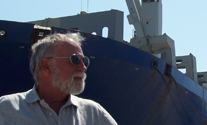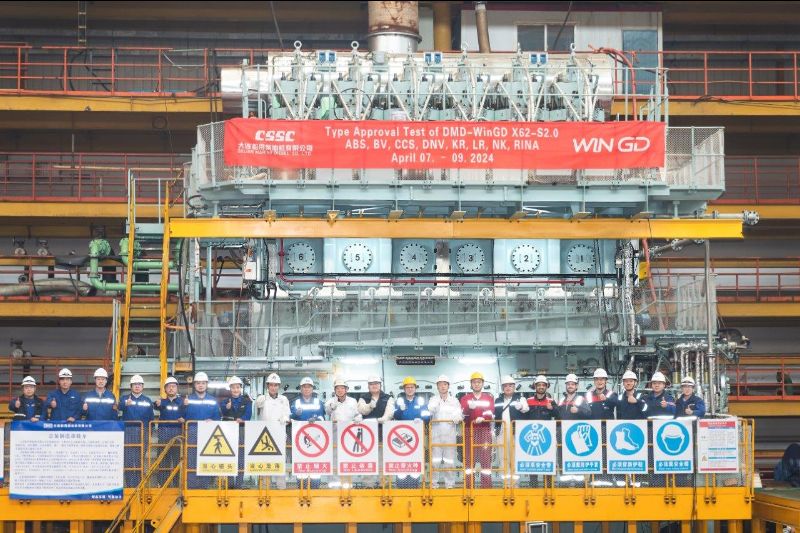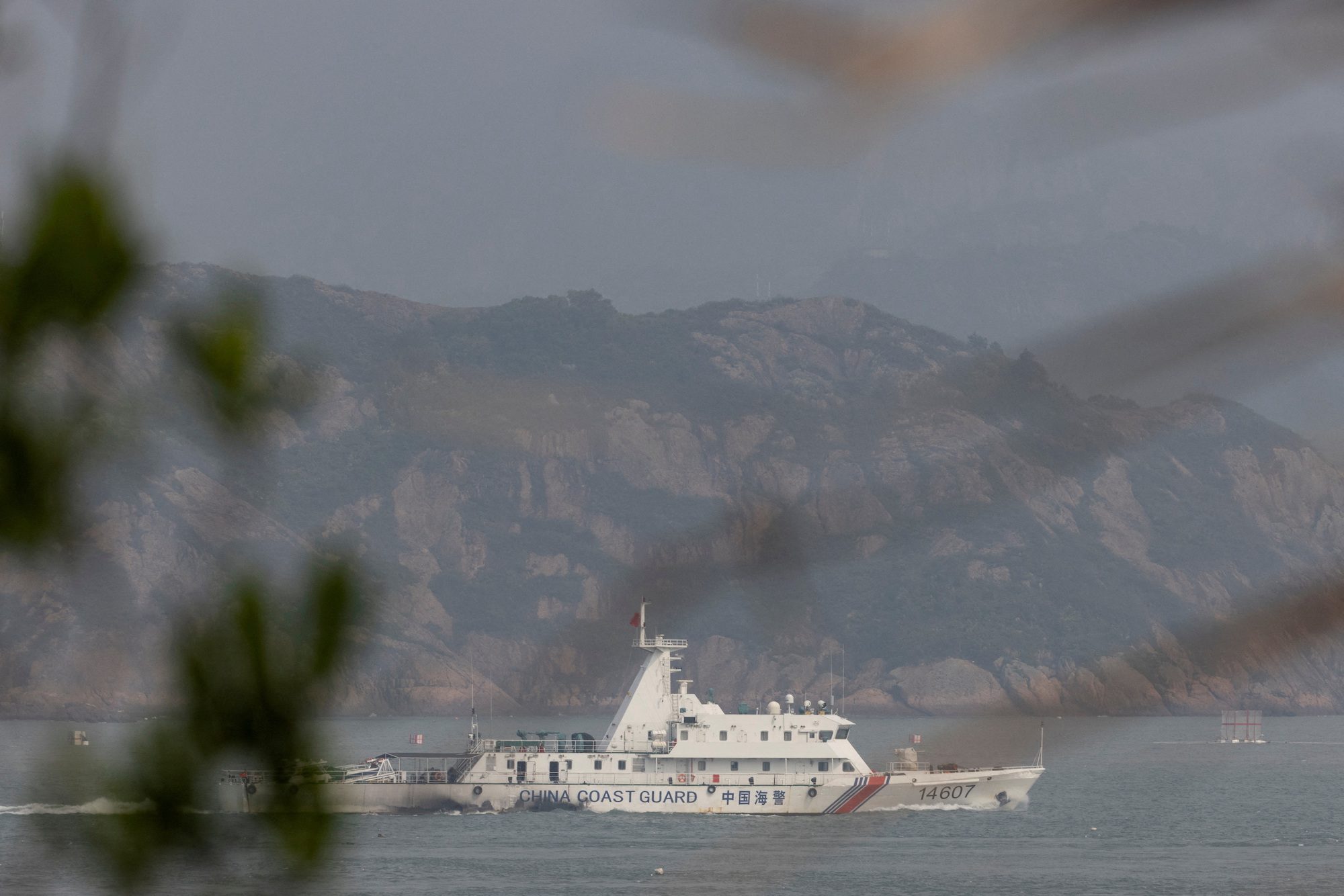
Riding Out a Hurricane in a Ship
By Max Hardberger:
The decision to ride a hurricane out at sea should never be taken lightly. There may be times when there is no other option – the Coast Guard today ordered large vessels in the commercial ports on the eastern seaboard to put to sea to protect shore assets – but today’s headlines also emphasize the dangers of doing so: the HMS Bounty foundered last night and, at this writing, two lives may be lost.
Large commercial ships are theoretically designed to withstand extreme weather conditions, since they can’t count on avoiding heavy weather while crossing oceans. Today, advanced weather forecasting and faster ships encourage operators and some masters to push their luck, but when they miscalculate, someone dies.
There is a mistaken belief—I suspect primarily held by landlubbers–that ships are safer at sea than alongside, and that may be the case, especially when the ship is secured to a dock with nothing on the other side of the slip or waterway to hold it off. Another problem could be the lack of scope, with bollards or cleats too close to the vessel to allow the vessel to rise and fall while preventing it from excessive horizontal movement. But under the right circumstances, a master should consider reinforcing the vessel’s securing lines, making provisions for emergency escape should the lines fail, and reducing the crew to the minimum necessary for lay-by, before making the decision to abandon what security the port offers for the open sea.
If the master does decide to remain in port, there are a number of things he can do to reduce the effect of the hurricane on the vessel. If the waterway’s depth permits, and if the waterway does not experience excessive currents, he should ballast the vessel down to reduce the effect of wind on the vessel’s securing lines. The house’s ports and non-deadlight windows should be covered with plywood. Special attention should be paid to the spring lines, and the vessel must be secured to hard points on the other side of the waterway, or at least outboard of the vessel, to keep it from smashing against the dock in high winds. Yokohama fenders, if available, can be effective in reducing impact damage.
If the master does decide to put to sea, he should realize that he may be exchanging a dangerous situation for a suicidal one. I remember when, in 1998, the Windjammer Fantome left the security of Big Creek, Belize, to ride out Hurricane Mitch. Hammered by hundred-mile-per-hour winds and forty-foot seas, she foundered and sank with all hands. The irony is that Big Creek is one of the best hurricane holes in the Caribbean. Protected to seaward by the barrier reef and the tip of the Placentia peninsula, surrounded by flat marsh with nothing to create flying debris, and in a 40-foot-deep waterway narrow enough for good scope on all sides, with proper preparations the Fantome could have ridden out the storm as secure as a prepper in his bunker.
However, once at sea, the master must concentrate on two things: maintaining steering-way and avoiding a lee shore. Steering-way is necessary to keep the bow into the wind and waves. If the main engine fails and the ship falls off broadside to the waves, it will be in a perilous situation. The ship must also have adequate sea room to leeward, both as insurance in case she loses steering-way and to counter the effects of wind, waves, and current. If the master has any doubts about his searoom, he must make way offshore while it is still possible. A situation could soon arise in which the combination of forces could overpower the vessel’s propulsive power, even if operating normally, and drive the ship inexorably toward the waiting reefs.
The best configuration for riding out a hurricane would be with at least some cargo onboard. A master who must put to sea in ballast is facing a dangerous situation, as merely filling the ship’s ballast tanks may not prevent excessive flexing and even hull failure. With at least some cargo onboard, the master can adjust his ballast to achieve proper freeboard and trim. Of course, all cargo onboard must be extremely well-secured before the vessel leaves port.
There are also navigational techniques for avoiding the worst quadrant of a hurricane, and container vessels and other fast commercial vessels, able to do 15 to 17 knots at sea, may well be able to outrun or at least ameliorate the worst effects of a hurricane.
One feature of modern vessels that reduces the risk of loss of life when riding a hurricane out at sea is the development of modern, self-launching, encapsulated lifeboats. Traditionally, the very act of getting into a lifeboat in heavy weather, and trying to get it down the side of the ship and into the boiling sea, was practically suicidal. Now, the crew can strap themselves into their seats and the boat shoots down a slide. These lifeboats are so well-designed and -constructed that they can survive all but the most extreme sea conditions.
The decision to ride out hurricane is clearly not a casual one, and only a master should be able to make it. Unless he feels that his vessel and crew are up to the challenge, he should resist pressure from owners, charterers, agents, and even shore authorities to put to sea in the face of a hurricane. If there’s a misjudgment and someone dies, it won’t be the owner or the authorities. And, speaking personally, I’d rather face a port captain’s wrath than a widow’s tears.
About the Author
 Max Hardberger has been a ship captain, a maritime lawyer, a high school English teacher, a writer, and a ship repossession specialist. His 1998 novel, Freighter Captain, was drawn from a series of voyages he made as a freighter captain in the Caribbean in the late 1980′s. His 2010 memoir, Seized: A Sea Captain’s Adventures, covers some of the ship extractions he’s made in his 20-year career as a ship-recovery specialist.
Max Hardberger has been a ship captain, a maritime lawyer, a high school English teacher, a writer, and a ship repossession specialist. His 1998 novel, Freighter Captain, was drawn from a series of voyages he made as a freighter captain in the Caribbean in the late 1980′s. His 2010 memoir, Seized: A Sea Captain’s Adventures, covers some of the ship extractions he’s made in his 20-year career as a ship-recovery specialist.
His adventures have been featured by NPR, The Learning Channel, the Los Angeles Times,gCaptain and numerous other publications. When not on the high seas, he lives in Louisiana. His website can be found at MaxHardberger.com

Subscribe for Daily Maritime Insights
Sign up for gCaptain’s newsletter and never miss an update
— trusted by our 109,081 members

Get The Industry’s Go-To News
Subscribe to gCaptain Daily and stay informed with the latest global maritime and offshore news

 Join The Club
Join The Club








